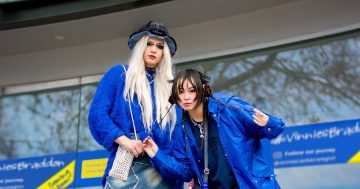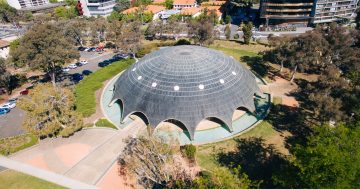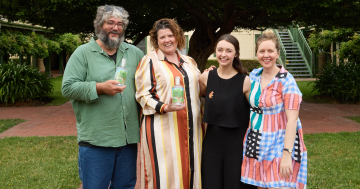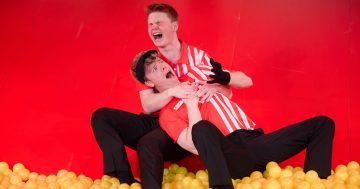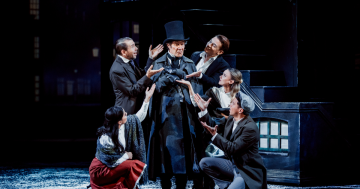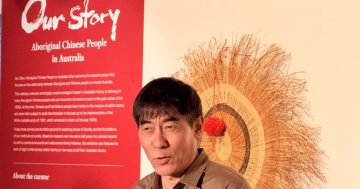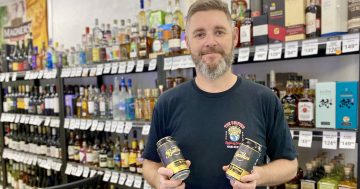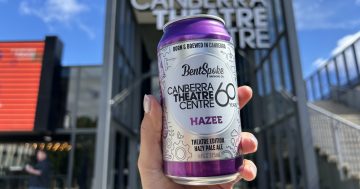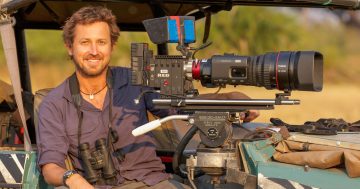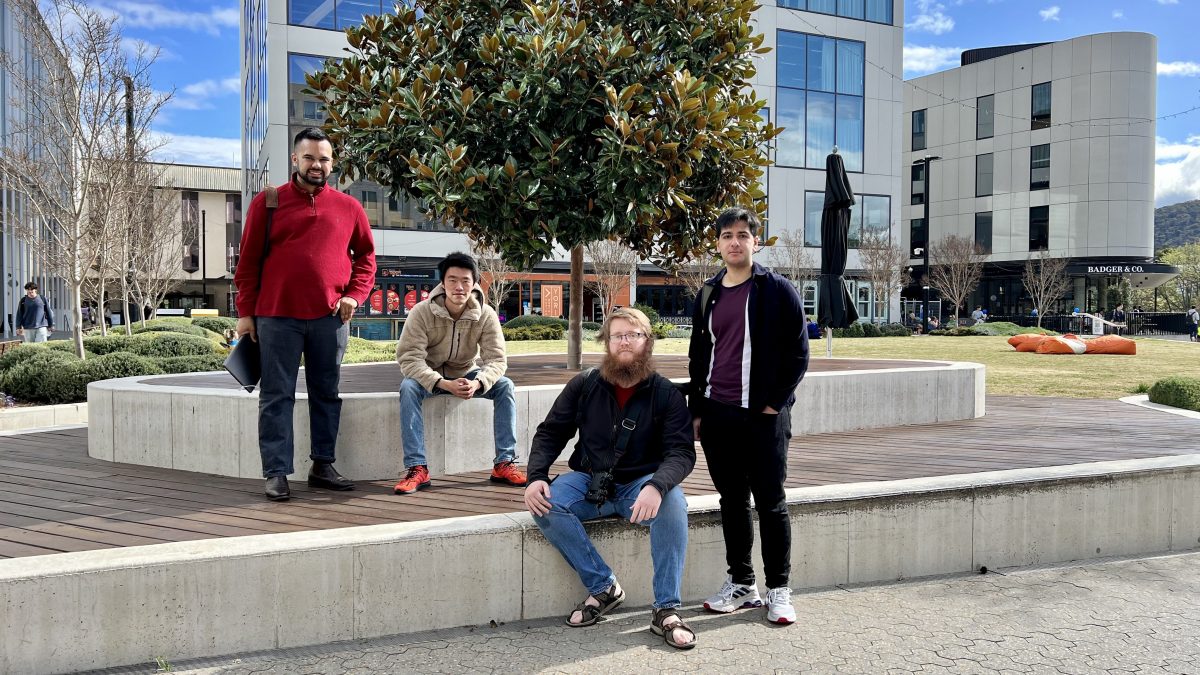
Saad Khalid, Jeffrey Liang, Oskah Dunnin and Zair Ahmed from Humans of Canberra. Photo: James Coleman.
“My name is Oskah Dunnin and I’m in my fifth year of a bachelor’s degree in Asian Studies and Masters in Asian-Pacific studies at the ANU. A bit far removed from journalism, but I hope to be writing for someone at some point.”
This is typically how a post begins.
The ‘Humans of …’ blog series has become a global internet sensation ever since New York photographer Brandon Stanton set out on a mission to gather 10,000 portraits of New Yorkers in 2010. The project exploded when he started conversing with his subjects and including short quotes and stories alongside his photographs.
Oskah is Canberra’s version of Stanton. He and four fellow students at the ANU have started Humans of Canberra to highlight the stories of the incredibly diverse bunch of people on our streets.
“Canberra has a reputation for being boring, but there are some amazing people here doing some really interesting things,” he says.
The subjects aren’t celebrities or politicians or influencers. They’re the people we queue behind at the cafe or give a nod to at the pedestrian crossing. But this isn’t to say their stories can’t be compelling. Clearly.
Jeffrey Liang is in his second year of computer science and takes care of the social media page. Creative director Zair Ahmed is doing law, politics and economics. And Saad Khalid has another year of economics and finance to go – he’s the editor.
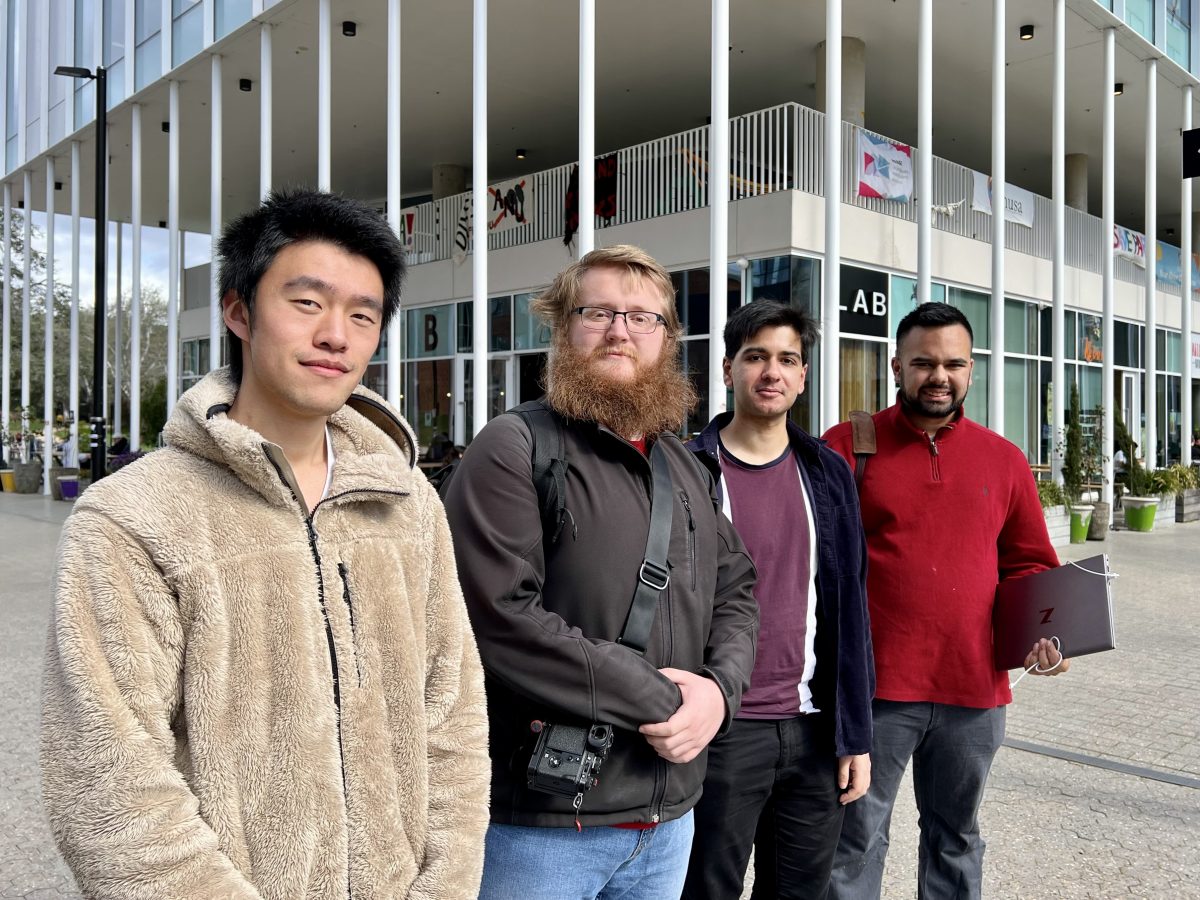
Jeffrey Liang, Oskah Dunnin, Zair Ahmed and Saad Khalid. Photo: James Coleman.
This isn’t the first time for Humans of Canberra.
A friend handed Saad the reigns of the previous page. This was launched by students in 2012, died, was resurrected in 2016 by other students and died again.
“Zair and I met over several lunchtimes earlier this year to map out what ours would look like,” Saad says.
They decided to take the same photojournalism approach but tell longer-form stories, broken down into parts of no more than a few hundred words. These would be posted directly to the Facebook page. They also didn’t want a rigid structure.
“We see a story, we think it’s interesting, we do it. We don’t want to lock ourselves into doing one per week or some sort of schedule because that seemed to be the undoing of the last one.”
The next job was to find talent. This is where Oskah’s skill set came in.
“With street photography, you’re training yourself to look for where things are happening,” he says.
“With Humans of Canberra, it’s very similar. It’s about approaching different people and trying different ways of approaching them. You don’t know what’s out there until you ask.”
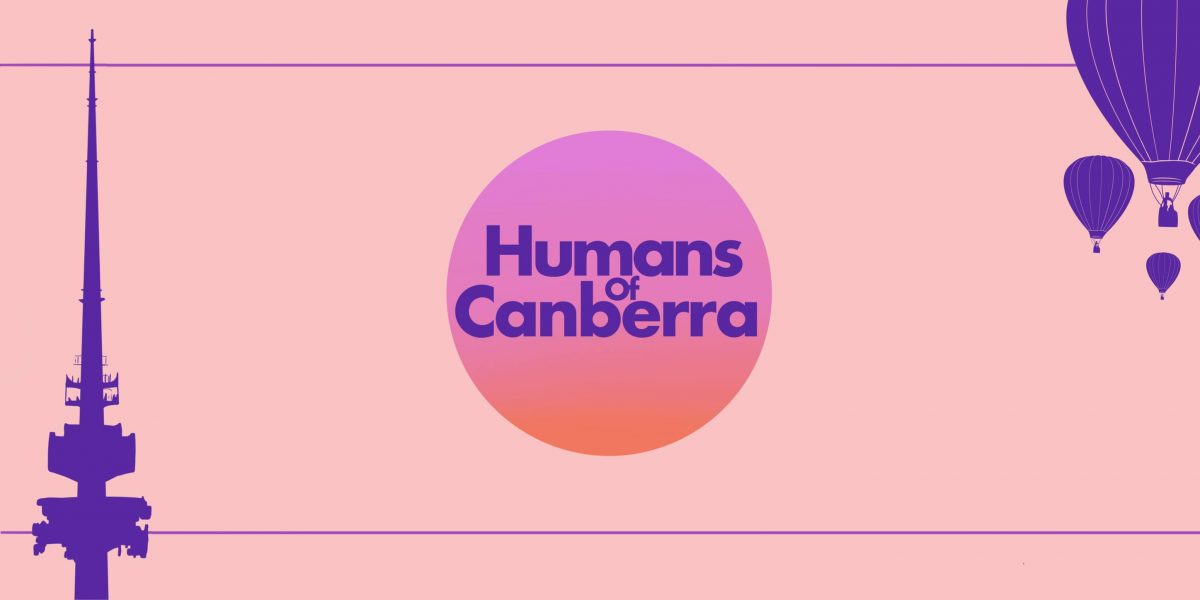
The graphic design for Humans of Canberra. Photo: Humans of Canberra, Facebook.
Oskah says they try to avoid the celebrity types because “their stories have already been told”.
“It’s the low-level, seemingly not interesting stories of random people. There’s a much stronger human element to that and it’s a lot more relatable to an audience.”
From there, it’s just about arranging a time to meet.
“We’ve never had someone say no. They’re more than happy to tell their story,” Saad says.
So if there was one word to unite Canberrans, what would it be? Diversity, according to Zair.
“Whoever we talk to brings a different perspective,” he says.
“When you first see the person’s picture as you scroll, you form your own preconceptions of what they’re like. But as you read further, those preconceptions get shattered as you learn what they’re really like.”
The amount of local heroes isn’t something Saad anticipated either.
“There are so many people who do so much in their homes, workplaces and communities, businesses,” he says.
The end goal is simple: put a smile on the face of the reader.
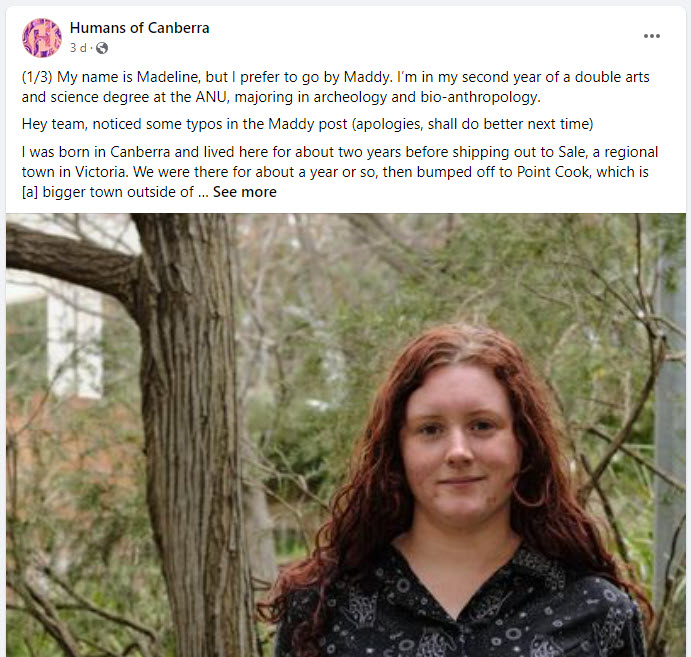
An example of a Humans of Canberra post. Image: Screenshot.
“Social media nowadays is made of toxic comments full of strong opinions, so it’s nice to have something that breaks this up with a longer form story where you can smile at the end, knowing that you’ve learnt about someone doing something,” Saad says.
Or, as Oskah puts it: “I like to think it helps make the big problems in our lives feel a little bit more approachable and manageable because we know other people go through similar things and have triumphed in their own way.”
And it’s working. The new-look Humans of Canberra page shared its first post on 12 August, but they’re already racking up thousands of views on each one since.
Many of these feature ANU students, but the team is now looking further afield.
“Campus has been a nice starting point for figuring out how to make order from the chaos, but we are branching out,” Oskah says.
Even after their university days, the four plan to keep it going.
“We have a big scope of more than 400,000 people here in Canberra – one day, we have covered them all,” Saad says.
Original Article published by James Coleman on Riotact.


